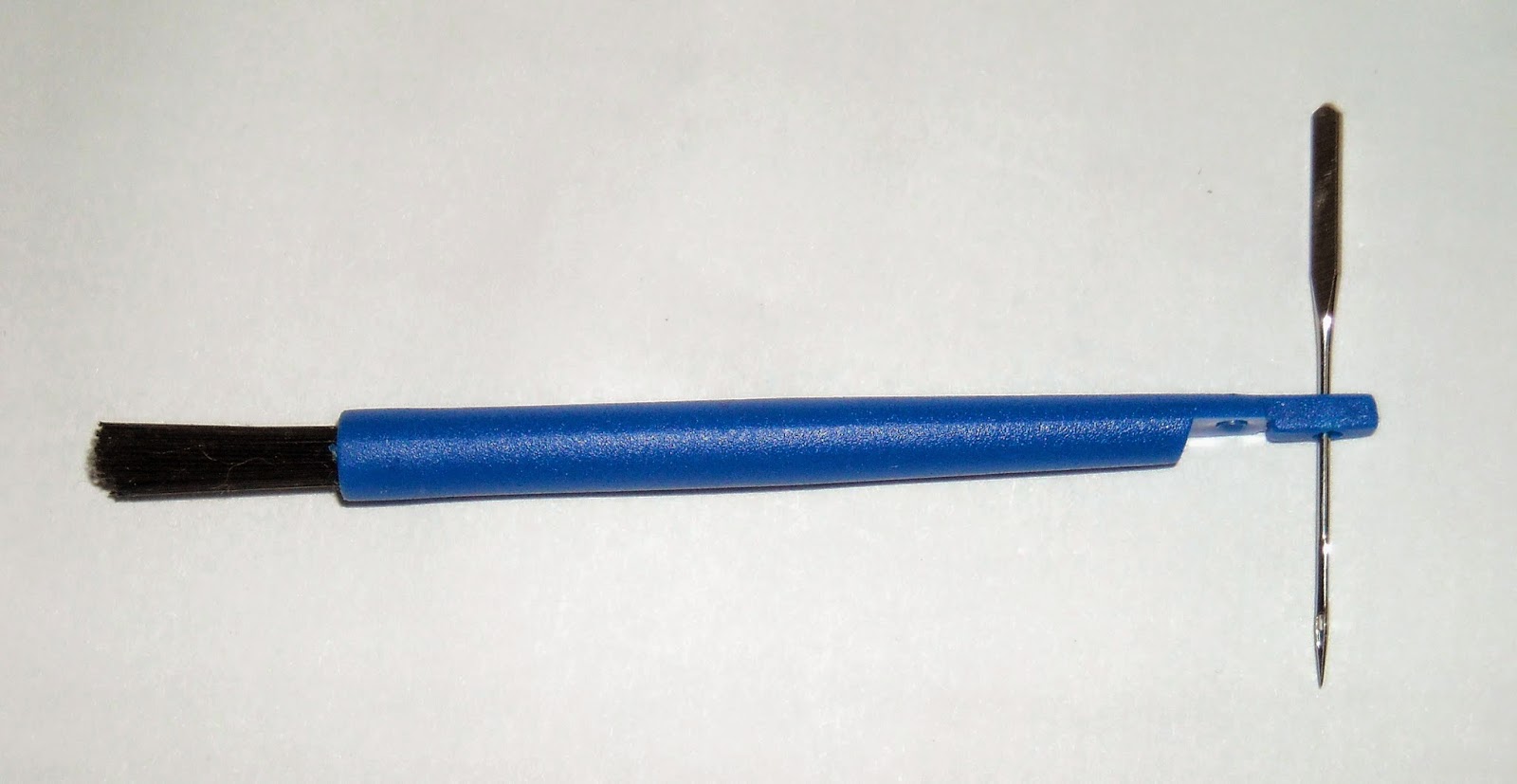SUPPLIES
Microwave safe 100% cotton batting--TWO 15" squares (see fabric below)-- I used Wrap & Zap by the Warm Co. They are no longer making Warm Tater, but say that Warm & Soft is the same...I could not find that in the Big Box store. You want something without a scrim (which Warm & Natural has, even though it says 100% cotton). I have never heard a personal experience of batting catching fire in a microwave, and suspect it might happen only if you cook something too long! But I also did not want to run my own test!
100% Cotton fabric-- TWO 15" squares-- you can measure a bowl or plate and make a custom size, but I think this will fit anything pretty well. It could be larger or smaller, but cut the batting to same size, to make two pairs of fabric & batt. They can be different prints/ colors, etc.
MACHINE SET UP This is the stuff nobody thinks to tell you about before you get started!
Use a size 90/ 14 needle, because you will be going through a lot a layers before you're done (esp. if you have a chosen a BATIK for this or pieced the squares).
Match your bobbin to the top thread! Just do it now so you don't have to wish you had later.
You can sew the whole thing with a walking foot if your machine handles lots of layers better with one. If so, put it on now.
Use a slightly longer stitch length...do not sew this with teeny tiny stitches.
SEWING
1. Sew an X on each fabric/batt pair, corner to corner.
1. Sew an X on each fabric/batt pair, corner to corner.
 |
| The two pairs, different sides up |
You can see a little zig-zag at the bottom right! It's perfectly OK to piece your batting so you can use the whole package.
2. Make a dart in the center of each side: fold the square in half Wrong Side out, and mark 1" away from the fold, and 2.5" down along the fold. Draw a line to connect the dots (I used a Sharpie). Pin to hold.
 |
| Draw a sewing line for the dart |
You can mark two sides, then re-fold the square and mark the other two before sewing.
Each square/pair gets four darts. You can start sewing from either end, and it only has to be back stitched at the point on the fold.
 |
| Zig-zag batting join will never be seen! |
3. Use your scissors to trim the excess dart fabric. The sewing and trimming do not have to be precise. be sure you have 4 darts in each square/pair before the next step!
 |
| Nobody cares how wide the seam allowance is |
4. Place the two square/pairs Right Sides together, one "inside' the other. Pin to match at the darts and corners. Take my word, you want the darts in BEFORE you sew it all together! Unless you'd like a cozy that matches my personal one, which was supposed to be a gift, but ended up with darts on the outside.
 |
| Don't worry, it looks better when it's done! |
5. LEAVE AN OPENING about 3" when you SEW all the way around. You know why I put that in caps right up front! Sometimes I start by back stitching, then lift the pressure foot and pull the item though a few inches, then back stitch and sew the rest of the way around. The seam allowance can be 1/4", or less, or maybe different on each side!
6. Turn the cozy Right Side out...poke out the corners (nobody cares if they aren't sharp...in fact, you may want to sew the next one with rounded corners!). Top stitch all around.
I like to close the opening as I top stitch, and usually trim the batting out of the seam allowance there first. You could hand stitch it closed, especially if you want to top stitch more than 1/4" in from the edge and avoid the extra batting layers.
 |
| Lots of layers do well with a walking foot. My Janome 7700 has a special one. |
7. Most of the instructions end there, but I like a final step to hold the two layers together. In the center of the bottom, sew a little square or just tack in place. That X sewn can be pinned to line up, but it really doesn't matter.
This means you can throw it in the wash, which is a good thing for any item that is used in the kitchen!
This means you can throw it in the wash, which is a good thing for any item that is used in the kitchen!
 |
| One stitch in the center would be enough |
Well, that's it! Quick and easy, as well as being very useful. Tell your giftee it just goes right in the microwave with the bowl or plate, ready to protect their hands when they remove the dish. And remind them it can be washed!
 |
| I even patched batik scraps for this |
Sure, you can use patchwork for one or both sides (it's really 2-sided) or maybe a nice holiday fabric. If the shape seems a little odd, I'd just put a plate of cookies in it, fold in the corners and tie it up with a ribbon.
Be sure to mention if the plate is microwave safe OR NOT! I got some metal ones from the dollar store, and they are NOT.
As with any simple item, you can get quite creative. But you can also make one of these cozies pretty darn fast!































